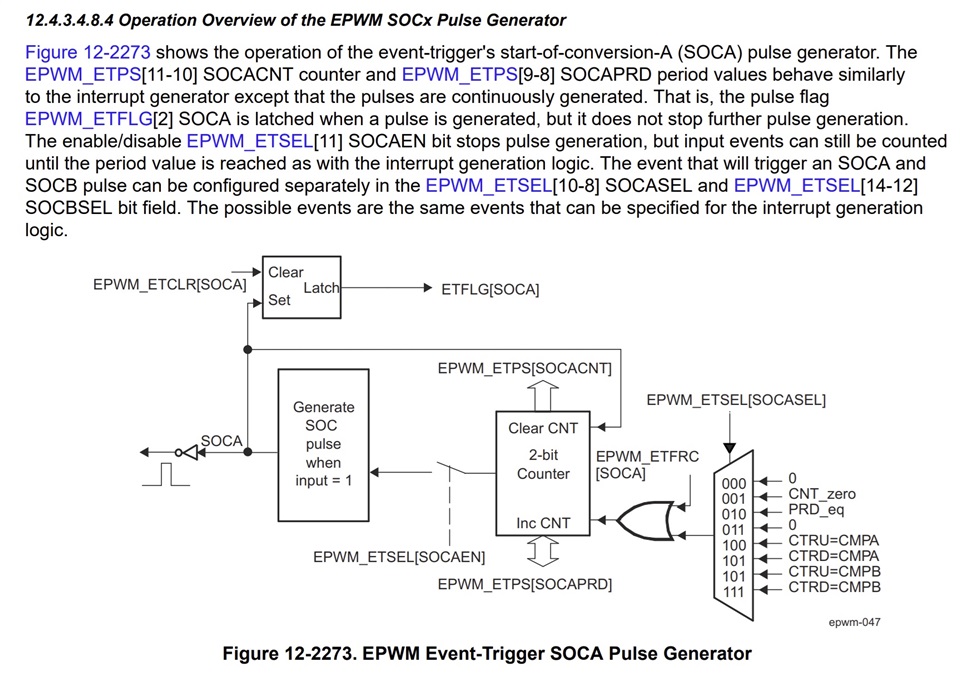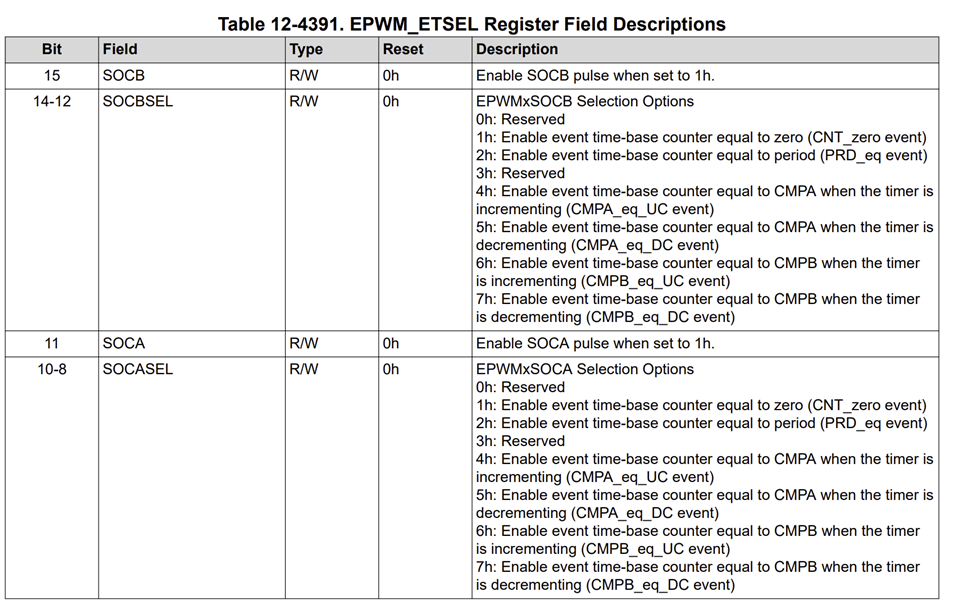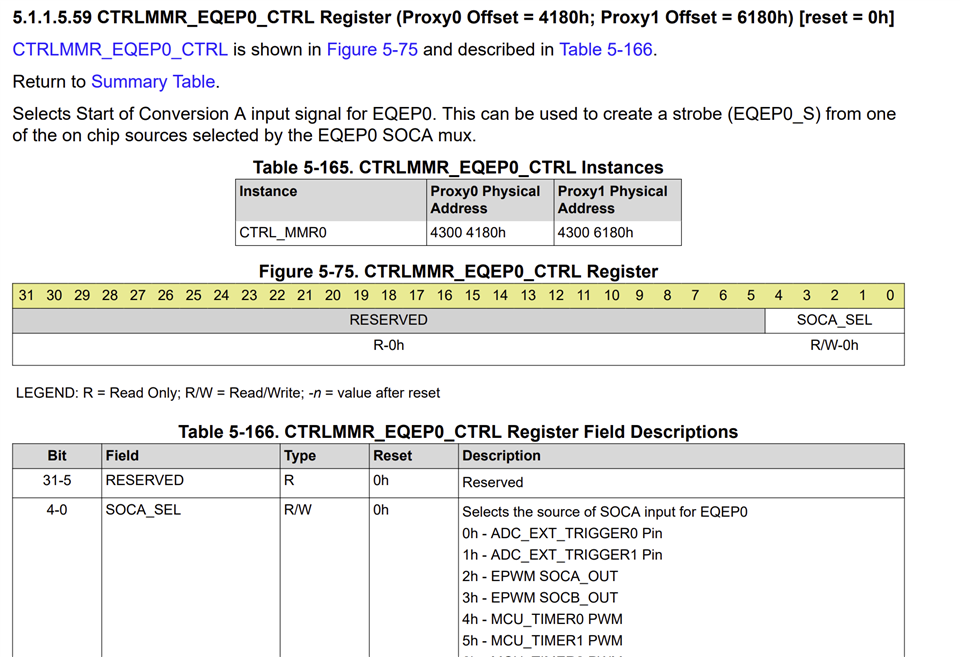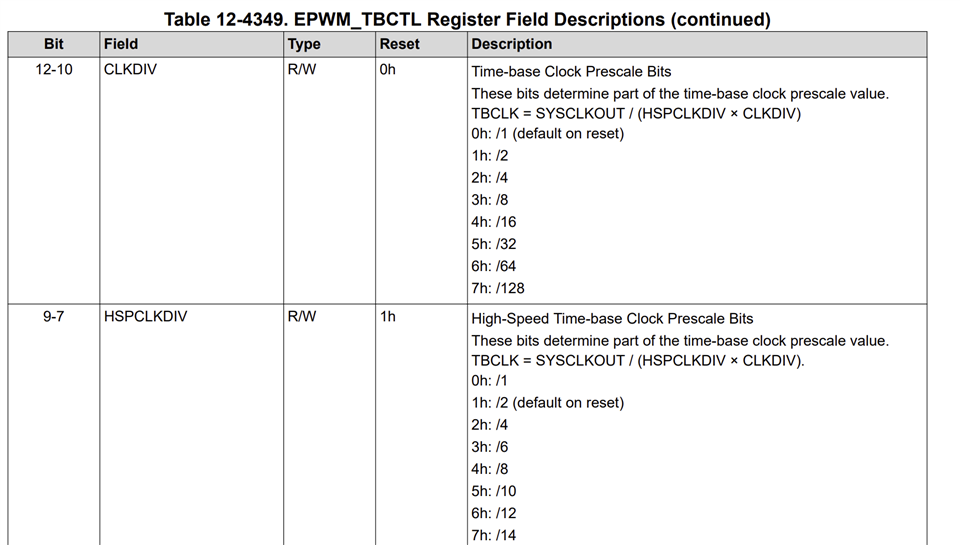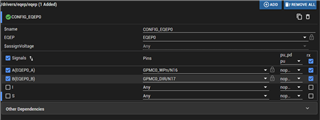Other Parts Discussed in Thread: SYSCONFIG,
Tool/software:
Hi,
I'm working on an AM64x-based system and would like to latch the position counter (QPOSCNT) of two eQEP modules simultaneously using a periodic signal generated by ePWM.
Here's what I'm trying to achieve:
- Generate a 10Hz pulse using ePWM.
- Use ADCSOCA from ePWM as an internal trigger.
- Route this ADCSOCA signal to both eQEP0 and eQEP2 as their STROBE input.
- Configure both eQEPs to latch QPOSCNT on the rising edge of the STROBE signal.
I believe the following API calls are relevant:
EQEP_setStrobeSource(baseAddr, EQEP_STROBE_OR_ADCSOCA);
EQEP_setLatchMode(baseAddr, EQEP_LATCH_STROBE_RISING);
My questions:
- Is it valid to use the same ePWM ADCSOCA signal as the STROBE source for multiple eQEP modules?
- Are there any limitations or considerations when doing this on AM64x?
- Could you provide guidance or an example on how to configure this using SysConfig?
- Do I need to configure any crossbar or internal routing explicitly, or is this handled automatically?
Any help or example projects would be greatly appreciated!
Thanks in advance.



